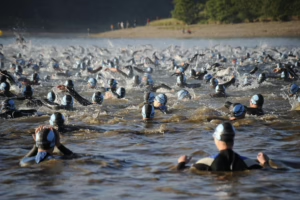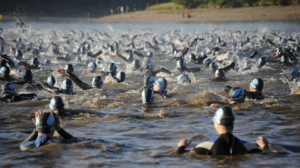Galloping Glory: Inside the World of Horse Racing and Equestrian Events
Horse racing and equestrian events form an integral part of cultural history and sporting excellence. From the thundering hooves on a racetrack to the graceful movements in an arena, these domains capture the awe and admiration of millions worldwide. In this article, we will delve deep into the world of horse racing and equestrian sports, exploring its rich history, different types of races and events, training methodologies, the bond between horse and rider, and the socio-economic implications of this illustrious sport.
A Brief History of Horse Racing
Horse racing dates back thousands of years, believed to have originated in Central Asia. Its roots can be traced to chariot racing in ancient Greece, Rome, and Egypt, where noblemen raced horses for entertainment and prestige. The modern form of horse racing began to take shape in the 17th century, particularly in England, with the establishment of organized races and formal rules.
The first recorded horse race took place in the U.S. in 1665, and by the late 19th century, thoroughbred racing had gained global prominence. The establishment of the Jockey Club in the mid-18th century marked a significant moment in standardizing rules and practices. The Kentucky Derby, the Preakness Stakes, and the Belmont Stakes emerged as the “Triple Crown” series in the U.S., gathering widespread attention and betting interest.
Types of Horse Racing
Horse racing can be categorized into several types, each offering unique experiences for spectators and participants.
Flat Racing
Flat racing is perhaps the most recognized form, characterized by thoroughbred horses racing over a level track. Events can range from sprints of 5 furlongs to longer distances of 2 miles or more. Major flat racing events include the prestigious Derby races and the Breeders’ Cup.
Jump Racing
Also known as steeplechasing, jump racing involves horses traversing obstacles such as hurdles and fences. These races test the agility, stamina, and training of both horse and rider. The Grand National in England is one of the most famous jump races, known for its challenging course and high-profile competitors.
Harness Racing
In harness racing, horses pull a two-wheeled cart called a sulky, with the driver seated behind. The races can involve trotting or pacing, showcasing the speed and endurance of the horses. The Hambletonian Stakes is a notable event in this category, held annually in New Jersey.
Endurance Racing
Endurance racing tests both horse and rider over long distances, typically 50 to 100 miles. The Arabian breed is often favored for its stamina and adaptability in these grueling events. The Tevis Cup in California is one of the premier endurance races.
The World of Equestrian Events
While horse racing primarily focuses on speed, equestrian events encompass a broader range of disciplines, showcasing riding skills, precision, and artistry. These include:
Dressage
Dressage is often described as “horse ballet,” where horse and rider perform a series of pre-defined movements, demonstrating their training and harmony. The goal is to convey the horse’s natural beauty and athleticism through refined movements.
Show Jumping
In show jumping, horse and rider navigate a course of jumps within a set time, with penalties for knockdowns or refusals. This discipline emphasizes precision, control, and quick reflexes, captivating audiences at events like the Olympics and World Equestrian Games.
Eventing
Eventing is a triathlon for horses, combining dressage, cross-country, and show jumping. This demanding discipline tests the versatility and training of horse and rider. The Badminton Horse Trials and the Burghley Horse Trials are prestigious eventing competitions.
Reining and Cutting
These Western disciplines focus on a horse’s responsiveness and agility. Reining showcases controlled spins, stops, and circles, while cutting demonstrates a horse’s ability to separate cattle from a herd, emphasizing partnership between horse and rider.
The Training Regimen
Training a horse for racing or equestrian events is a rigorous and specialized process that requires time, patience, and expertise. The bond between horse and rider is fundamental in this context, often cultivated through consistent and positive interactions.
Horse Selection
The first step in creating a successful partnership begins with horse selection. Factors like breed, temperament, conformation, and potential for the specific discipline all play crucial roles. For racing, thoroughbreds are favored, while various breeds excel in other equestrian disciplines like warmbloods for show jumping and Arabians for endurance.
Conditioning
Conditioning focuses on building stamina and strength through a planned regimen of exercise. For racehorses, this might involve galloping on tracks, interval training, and trotting for fitness. In equestrian disciplines, conditioning extends to groundwork and lateral movements to establish physical and mental engagement.
Nutrition
Proper nutrition is vital for peak performance. Horses require a balanced diet tailored to their needs, often incorporating grains, hay, and supplements for additional energy. Pre-competition nutrition is especially important, as it can impact performance and recovery.
Mental Training
Mental preparation is equally essential. Horses can experience anxiety and stress, impacting their performance. Techniques such as desensitization, positive reinforcement, and exposure to various environments can help horses remain calm and focused during events.
The Bond Between Horse and Rider
The relationship between horse and rider is intimate and profound, often likened to a symbiotic partnership built on trust. This connection is cultivated through shared experiences, consistent training, and mutual respect.
Communication
Effective communication between horse and rider goes beyond verbal cues; it involves subtle body language and pressure applications through reins and legs. A skilled rider can perceive and respond to a horse’s signals, creating harmony during performance.
Trust and Respect
Trust is central to any successful partnership. Horses must feel secure in their rider’s abilities and decision-making. Respect, built through training and care, fosters cooperation and willingness in a competitive environment.
Emotional Connection
Riders often form deep emotional bonds with their horses, leading to a better understanding of their needs and behavior. This connection can significantly impact performance, as a calm and confident horse performs better than one that is anxious or fearful.
The Socio-Economic Aspects of Horse Racing and Equestrian Events
Horse racing and equestrian events contribute significantly to economies around the globe. They create jobs, generate revenue through tourism, and stimulate local economies. The events attract millions of spectators, gamblers, and participants, making them vital for economic growth in many regions.
Employment Opportunities
The horse industry offers diverse career paths, from trainers and jockeys to veterinarians and stable hands. Each sector requires specialized skills and knowledge, contributing to the economic landscape.
Betting and Wagering
The betting industry surrounding horse racing is colossal, with billions wagered annually. It not only provides revenue for racetracks but also generates tax revenue for governments. The complexity of betting types, including win, place, show, and exotic bets, adds layers of excitement for fans.
Tourism and Events
Major races, such as the Kentucky Derby or Royal Ascot, attract visitors from around the world. These events contribute to tourism, with local businesses benefiting from increased demand for lodging, dining, and entertainment.
Animal Welfare Concerns
While the horse racing and equestrian industries yield economic benefits, they also face scrutiny over animal welfare. Issues such as racehorse injuries, the treatment of retired racehorses, and the ethics of breeding practices have sparked debates. Organizations are actively promoting initiatives to ensure the welfare and dignity of these magnificent animals.
Modern Technology in Horse Racing and Equestrian Events
Recent technological advancements are transforming how horse racing and equestrian events are conducted, enhancing efficiency, safety, and spectator engagement.
Data Analytics
Data has become a pivotal aspect of horse racing, with analytics used for breeding, training, and race strategies. Metrics like speed ratings, past performance, and track conditions help trainers, owners, and bettors make informed decisions.
Virtual Reality and Augmented Reality
These technologies are enhancing spectator experiences, allowing fans to immerse themselves in the action. Virtual reality can simulate races, while augmented reality can provide real-time statistics during events.
Health Monitoring
Wearable technology is gaining traction, with devices that monitor a horse’s heart rate, temperature, and activity levels. This data enables trainers to optimize training programs, improving performance while ensuring the horse’s health.
Broadcasting Innovations
Live streaming and online betting platforms have revolutionized how audiences engage with horse racing and equestrian events. These technologies enhance accessibility, allowing fans to watch events remotely while participating in betting from anywhere.
Challenges Facing the Industry
Despite its glory, the horse racing and equestrian industries face numerous challenges that require adaptive strategies for sustainability and growth.
Public Perception
Public perception of horse racing is polarized. While many celebrate the sport, concern over animal welfare remains significant. Addressing these concerns through transparency and responsible practices is crucial for maintaining public trust.
Regulatory Challenges
Different regions have contrasting regulations governing horse racing and equestrian sports. Ensuring fair play and safe practices across jurisdictions can be challenging, requiring constant dialogue between stakeholders.
Economic Fluctuations
Economic downturns can significantly impact the horse racing industry as disposable income for entertainment diminishes. This variability necessitates a resilient business model to withstand financial uncertainties.
The Future of Horse Racing and Equestrian Events
As we look to the future, horse racing and equestrian events will likely continue evolving, adapting to societal changes and technological advancements. Emphasis on animal welfare, environmental sustainability, and inclusivity will shape the future landscape of these sports.
Emphasis on Welfare and Sustainability
The industry is increasingly responsive to calls for better animal welfare practices. Initiatives to responsibly retire racehorses and ensure their well-being after their competitive careers are gaining momentum. Additionally, sustainable practices in training and event organization will help align the industry with broader ecological concerns.
Expanding Participation
Efforts to make horse riding and equestrian sports more accessible across demographics can broaden participation. Organizations are increasingly focusing on community engagement, outreach, and programs for underrepresented groups to foster inclusivity.
Technological Integration
The integration of advanced technology will shape the industry’s future. From enhanced data analytics for training to augmented reality for spectator engagement, embracing innovation will be crucial for staying relevant in a rapidly changing entertainment landscape.
Conclusion
Horse racing and equestrian events indeed represent “Galloping Glory.” They embody a rich tapestry of tradition, athleticism, and human-animal partnership. As the industry navigates the complexities of modern society, the heart and soul of horse racing and equestrian sports will continue to captivate audiences, embodying the timeless beauty of the bond between horse and rider. With proactive measures addressing welfare, economic viability, and technological advancement, the legacies of these noble pursuits will gallop on for generations to come.
References
- Horse Racing in Ancient Times and Its Evolution.
- The Economics of Horse Racing: Past, Present, and Future.
- Equestrian Sports: History, Types, and Popularity.
- Training Horses for Peak Performance: A Comprehensive Guide.
- Animal Welfare in Horse Racing: A Review of Current Issues.
- Technology in Horse Racing: Integrating Innovation for the Future.
(Note: The above references indicate a placeholder for footnotes and citations where detailed information should be sourced.)
This comprehensive look into the world of horse racing and equestrian events captures the essence and significance of these sports. If you would like to explore specific sections further or require a more detailed discussion on a particular aspect, feel free to ask!


























Add Comment